Southern Nevada is never a stranger to pests. Located in dry, hot, windy and mostly arid environments, there are particular pests that Southern Nevada residents have to deal with. To avoid these pests from entering your house and becoming a nuisance to your everyday activities, we give you a list of those commonly found in Southern Nevada.
ANTS
Argentine ants are a common type of ant in Southern Nevada. They live in wet environments near a food source such as near or under buildings with moist soil, sidewalks and gardens. They prefer eating sweet substances such as honeydew and flower nectar.
Carpenter ants, on the other hand, tunnel through dead and decaying wood to build 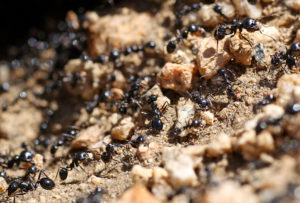 their nests which cause the destruction of wooden objects in houses, offices, and buildings.
their nests which cause the destruction of wooden objects in houses, offices, and buildings.
Imported fire ants are the most aggressive of all. They build their mounds of soil as nests and have a painful sting that can cause white blisters.
Harvester ants construct their nest close to trees and shrubs where they dig underground tunnels for their colonies. Their bite does not hurt at first but can gradually result in intense pain and swollen lymph nodes.
Odorous house ants give off a rotten coconut smell when crushed. They like to eat dead insect and sugary sweets and live both indoors and outdoors.
Pavement ants carry a stinger in their last abdominal segment. They live in and under roadways, sidewalks, concrete slabs and large rocks.
BEES
Bees are known for their dangerous stings that can cause painful and severe allergic reactions. Their venom is stored in a sac attached to their stinger. Some people may die of suffocation as the sting may fill their lungs with fluid. Bees are cooperative insects and live in colonies where collected food such as pollen and nectar are stored in a hive. They are usually yellow and black in color with an average size of 0.4 to 0.6 inches.
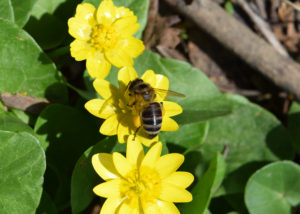
Africanized honey bees or killer bees typically set up their nests where people may unintentionally disturb them, which may, in turn, prompt their attacks. Once they get aggressive and excited, they will chase the target over a quarter of a mile and will sting in high numbers.
Bumblebees live in large “families” and prove to be beneficial as they pollinate plants. However, unlike other bees, it can sting more than once and will leave you painful stings that can last for days. Bumblebees nest in the ground and also above ground around patios.
Honeybees can survive many years with their colony intact and are prepared for harsh conditions. They store enough honey to feed their “families” during the winter season. They build their nests in tree crevices and, at times, inside attics and chimneys. Because of their endurance, it is hard to remove their large nests. When this happens, pest control services will be needed.
Bees Nests can be found almost anywhere including trees, roof overhangs, on the ground, and more. Recognizing them is the first step in remaining safe. They will usually have bees flying around them and may look like a mound of dirt. Here is a bees nest we recently dealt with.
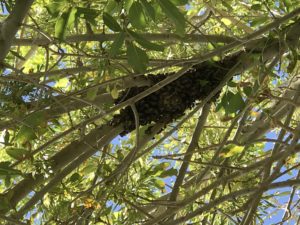
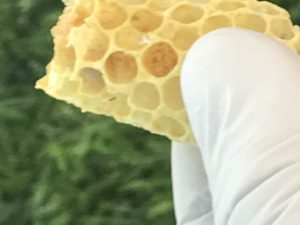
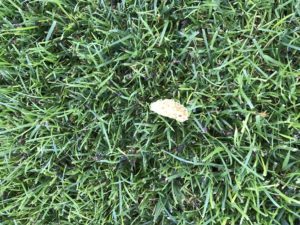
This one was a little hard to see up in the tree, but the homeowner called us and we were able to clear the nest and protect the homeowner and their family.
BED BUGS
Bed bugs can creep in our homes, hotels, public transportation vehicles, and places we frequent. Their flat bodies can squeeze in between the threads of our bed sheets, seats, bags clothing and small cracks and crevices on the floors and walls. These bugs, which are usually broad and oval-shaped, feast on human blood to get their complete nutrition. It can also feed on animals that are also warm-blooded. From the initial translucent tan appearance, bed bugs swell and become red to dark brown when full. They can clutch onto the skin and pierce through it to inject their saliva which will leave annoying red and itchy welts. It is not hard for their population to multiply. Female bed bugs can deposit five eggs a day, each egg about the size of a speck of dust. They can develop in a month and can produce three more generations in a year. Bed bugs do not have wings, but they can move quickly on any flat surface. Adult bed bugs can also last for a year or longer even without eating. Without proper handling of bed bugs, it can scatter all over the room and all over your house.
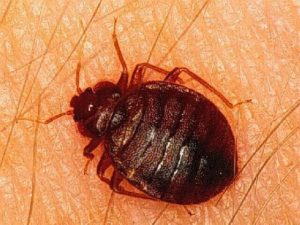
COCKROACHES
Cockroaches are some of the most adaptable pests that have survived for millions of years. They can live anywhere that is near sources of food and water, but can also survive without food for a month and water for a week. Due to their high adaptability, they can endure harsh conditions like cold winter months and extreme natural disasters. Their length ranges from 0.1 inches to 3.2 inches. They can crawl, fly and swim underwater and they proliferate in unkempt houses, offices, and buildings.
American cockroaches 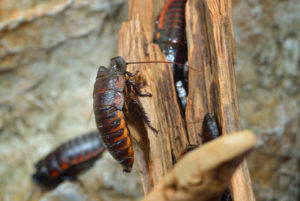 are the largest type of roaches found in homes. These reddish-brown colored pests are usually found in sewers and drainage pipes as they prefer to live in
are the largest type of roaches found in homes. These reddish-brown colored pests are usually found in sewers and drainage pipes as they prefer to live in
warm, dark and damp areas. Due to their kind of habitat, they can harm the health of humans by carrying bacteria and pathogens such as salmonella or E. coli.
German cockroaches prefer to eat sweet and floury food including non-organic items like books. These roaches crawl through dirty areas and likely to spread bacteria and germs in houses. They also shed their skins, which are considered as allergens, where food can be contaminated. This can cause allergic reactions, asthma, food poisoning and other illnesses.
RODENTS
Rodents are mammals with upper and lower pairs of rootless incisor teeth in the jaws. Because of these incisor teeth, rodents have the most power for chewing and gnawing. Two of the most common pests in Southern Nevada, mice, and rats belong to this order. They can carry 200 pathogens that can harm humans.
Desert shrews live in an arid environment and primarily feed on both larvae, adult insects, small mammals and at times resort to cannibalism. They have a short, grayish brown, dense coat, measuring an inch or two in length.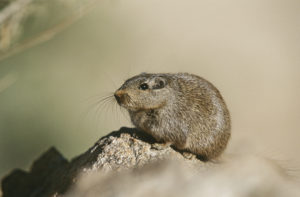
House mice are the most common rodent pest. These brown to black-colored pests can contaminate human food and cause damage to property. These mice often leave behind urine and feces that can trigger allergies. They can also bite humans and spread diseases, especially when they are infected by parasites.
Norway rats are also called “sewer rats.” They are often black in color and have the average length of 10 inches to 12 inches. More aggressive and larger than other types of rats, they tend to invade buildings and create nests that are usually made of shredded paper or cloth. They urinate on food, causing contamination. They also chew on wires that can cause fires. Aside from that, they also attack humans that have resulted to killing human babies and adults.
Roof rats are 16 inches long from head to tail. These rats are the reason for the infamous bubonic plague during the Middle Ages.
SCORPIONS
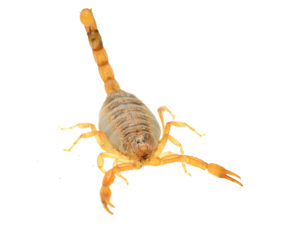
Scorpions are eight-legged arachnids with life-threatening venom at the tip of their tails. They are very common desert pests, especially in Las Vegas, and insects are their primary source of food. Preferring dark environments, they are more active at night and hide under rocks, boards, and trash during the day. Their sting can cause nausea, numbness, vomiting, breathing difficulties or convulsions. Scorpions can survive for many years and can rapidly proliferate in the area.
Bark scorpions, also sometimes called as Sculptured Centruroides, have produced casualties in small children and the elderly. Their stings are very painful. They are dark brown to tan with greenish yellow color along the midline with around 2 inches to 2.75 inches in length. They have long and slender pincers, which they use to seize prey, and kill them with their sting. These scorpions usually stay under bark, stones, and dry abandoned dirt roads.
Desert hairy scorpions can stretch to 5.5 inches long with a black and yellow-colored body and abundant erect dark brown hair on legs and abdomen. They prey on insects, small lizards, and snakes. These scorpions will sting if agitated, causing numbness of limbs and swelling.
SPIDERS
Spiders do not only make beautifully patterned cobwebs. Some are dangerous and emit poison. These eight-legged arachnids are predators that eat insects and small animals. Many can be found indoors. Two of the most dangerous spiders can be found in Southern Nevada, the Black Widow, and Brown Recluse.
The black widow, also known as hourglass spiders, is the most common spider in Las Vegas. They are black-colored with a red hourglass figure on the underside of the 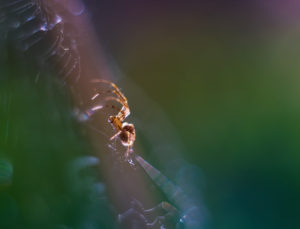 abdomen. Black widows prefer dark areas, and if disturbed, they might sting you with a venom 15 times more toxic than a rattlesnake’s venom. The sting can cause convulsions, fever, chills, nausea, vomiting and abdominal pain. Usual victims of their sting are those who clear up the garden and spray over-the-counter insecticide. The treatment for the bite may require an anti-venom.
abdomen. Black widows prefer dark areas, and if disturbed, they might sting you with a venom 15 times more toxic than a rattlesnake’s venom. The sting can cause convulsions, fever, chills, nausea, vomiting and abdominal pain. Usual victims of their sting are those who clear up the garden and spray over-the-counter insecticide. The treatment for the bite may require an anti-venom.
Brown recluse spiders, or know as “violin spiders,” have a yellow to dark brown body. They inflict a bite where pain intensifies within 8 to 10 hours. The bite can produce large ulcerous sores in a short period. The sore heals slowly even under the care of a doctor. Difficult to treat, the bite often leaves a large and disfiguring scar cause of severe damage to the tissue. The injury may require hospitalization and may take weeks to heal.
